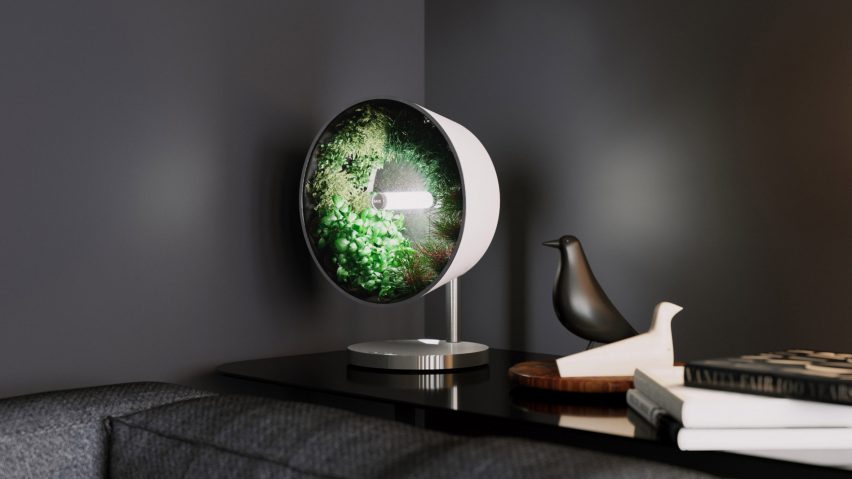Apartment dwellers can enjoy nearly 1.5 metres of indoor veggie patch using the Rotofarm by Bace, a countertop hydroponic garden where plants are rotated to grow more quickly.
Like all hydroponic systems, the Bace Rotofarm works without soil, instead using mess-free nutrient and water reservoirs to feed its plants.
With the addition of the rotary design, the plants turn in a full circle every hour and spend half their time in negative gravity. Bace says this accelerates their growth as much as twice over.
Australian Toby Farmer, who founded Bace in 2018, refined the principles of rotary hydroponics for Rotofarm, which he calls the "easiest-to-use and most automated planter in the world".
"I think rotary hydroponics is the answer to growing vegetables faster, easier and more efficiently," said Farmer.
This style of farming was initially developed by NASA for use on the International Space Station.
He added that his own approach to eating and cooking had changed just through the process of testing the prototype.
"By growing produce at home without preservatives or pesticides, the produce doesn't expire until its cut, you're not spending as much money on groceries and a lot of space is saved in your refrigerator," Farmer said.
"Perhaps most importantly, we help to reduce carbon emissions produced by mass farming, transport and plastic packaging into supermarkets."
Farmer is planning to launch the Rotofarm on Kickstarter in September. Other features of the design include an automated LED light tube at the centre of the farm-bed that shines out onto the tops of all the plants.
The light tube is divided into four zones that can be dimmed and timed differently to provide the optimal level of light for different plants.
The light is similarly coloured to sunlight, but with a hint more red to increase the rate of photosynthesis, stimulating even faster plant growth.
To shield the house from the bright light emitted by the rotary garden, there is an optional magnetic cover that reduces the glare while still allowing the produce inside to be visible.
Bace describes Rotofarm as "truly set-and-forget" — it can even notify the user when produce has overgrown and requires harvesting.
The garden occupies a 30-centimetre footprint on the kitchen counter, but unrolled it would stretch out to a length of almost 1.5 metres.
It is made from stainless steel, silicone and strengthened, smoked glass.
"It was paramount that Rotofarm not be treated as decor," said Farmer. "It's designed to be used. We went to great lengths to ensure it fit seamlessly into any kitchen."
Hydroponics has a long history but has evolved in recent decades, thanks in large part to NASA research incorporating it into a self-sustaining life support system for space stations and potentially colonies on other planets.
Hydroponic systems range from the large-scale ones used in commercial agriculture and architecture projects, such as Sasaki's Shanghai greenhouse, and small-scale ones for residential homes and apartments, like IKEA's Krydda/Växer series.

